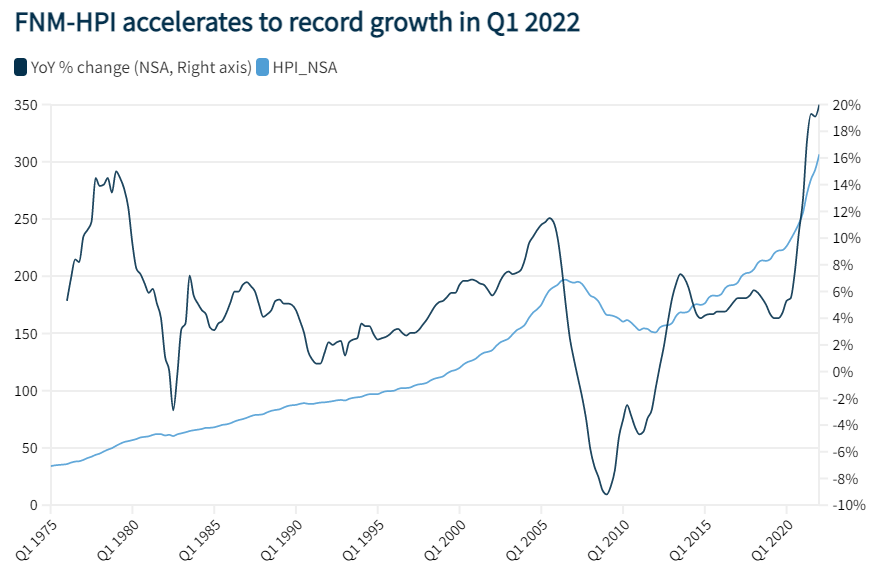The Fannie Mae Home Price Index (FNM-HPI) rose to its fastest annual pace ever on record in Q1 2022, measuring 20% YOY, the company reported.
This is up from an annualized rate of 19.1% in Q4 2021, the fastest pace in the index’s 47-year history.
Seasonally adjusted home prices rose 4.8% from last quarter.
The FNM-HPI is a national, repeat-transaction home price index that measures average quarterly price change on all single-family properties in the U.S., excluding condos. The FNM-HPI will now be publicly available as a quarterly series with a start date of Q1 1975.
“We’re pleased to begin sharing the Fannie Mae Home Price Index with external audiences. We have long used this index within the company, including as part of our quarterly financial disclosures, and we believe it will be a highly accurate, timely indicator for measuring home price growth for both economists and housing industry stakeholders alike,” said Doug Duncan, Fannie Mae Senior Vice President and Chief Economist.
“After decelerating toward the end of 2021, the FNM-HPI sped up in the first quarter due to continued strong homebuying demand and a lack of inventory. We believe recent homebuying demand was augmented by many homebuyers pulling forward their home purchase plans in anticipation of rising mortgage rates. Now, with rates having sharply risen since the start of the year – and some of that homebuying demand now met – we expect price growth to begin cooling as the year progresses.”

Home prices continue growing despite hope for a cool down this year as mortgage rate increases pricing many out of the market and reducing competition. Mortgage rates averaged 5% last week for the first time in a decade.
“As Americans contend with historically high inflation, the combination of rising mortgage rates, elevated home prices and tight inventory are making the pursuit of homeownership the most expensive in a generation,” said Sam Khater, Freddie Mac’s Chief Economist.
